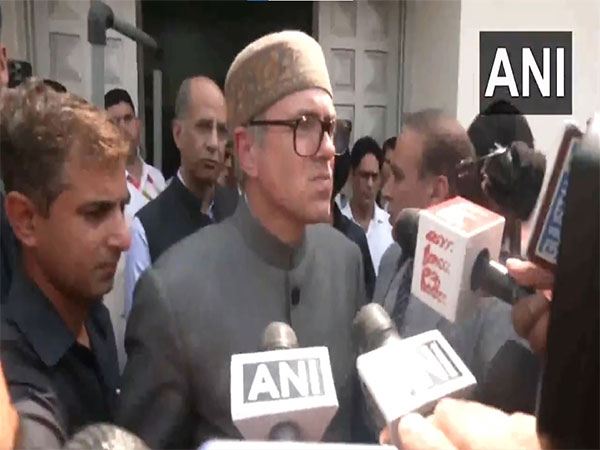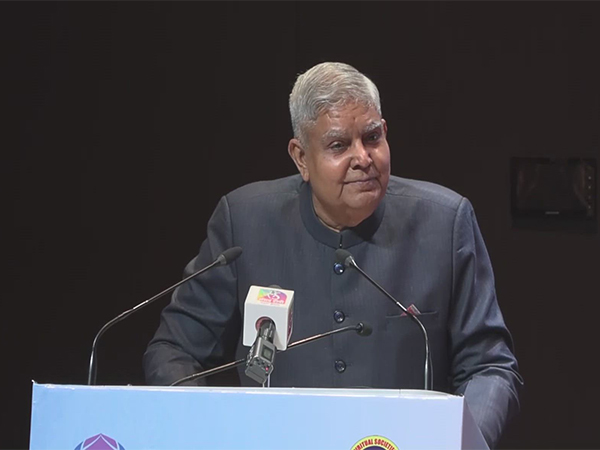Cultural and religious importance of Chumi Gyatse for Tibetans
Dec 25, 2022

Guwahati (Assam) [India], December 25 : Chumi Gyatse, a collection of 108 waterfalls is nestled far away in India's land of the rising sun, a tiny hamlet called Tsechu located barely 250 meters from the India-China border in the Tawang district of Arunachal Pradesh has been in the news of late for its natural splendour and Buddhist folklore, writes Bidhayak Das for Guwahati-based platform The Borderlens.
Chumi Gyatse is of great cultural and religious relevance to Tibetans. Of the many folklores associated with the formation of the waterfalls, the one that seems to have caught the imagination of the people is connected to the revered legendary Indian Buddhist mystic who is also the Guru Rinpoche.
The story goes that Padmasambhava who is revered by the followers of Tibetan Buddhists as the "Second Buddha" flung his rosary containing 108 beads which hit the rocks resulting in the 108 waterfalls. He is said to have done this in response to a challenge from a Bon Lama (monk).
Another story has it that he created the falls after frantic prayers from local residents to cure them of a plague that had spread throughout the area. On drinking the water, the locals are said to have been cured from the disease, which is incidentally what a tourism department plaque outside the entrance to this place mentions, reported The Borddrlens.
But there are a few other narratives associated with the waterfalls and its creation. According to Karsang Lama, a senior monk at the Chumi Gyatse Gompa, "the Karchek," a 600-page Tibetan book that documents stories of Gompas and temples in Tibet talks about a Guru named Lawapa, considered to be an avatar of the Manjushree (the embodiment of all of Buddha's wisdom), as the creator of the waterfalls.
"There were three gurus, Lawapa, Nakpopa and Matipa, who came from Tibet to this area for meditation. They lived in three different caves on either side of the mountains. Two extraordinary events are said to have happened. One of the gurus ran out of pens while continuously writing in between his meditation. On learning about this, Nakpopa threw his pen towards his friend which landed upside down near the cave giving rise to and upside down bamboo grove," said Karsang Lama, while reiterating that "it was the power of guru Lawapa which created the 108 waterfalls."
The waterfalls were apparently created by the guru to overcome scarcity which one of the gurus was facing while meditating in his cave. "On hearing about the problem guru Lawapa used his power by chanting some mantra and pointed towards the rocks and produced water from 108 different holes.
This is the true story and written in the book, the Kharchek, from where we have found all these details", said Karsang Lama, while acknowledging that the "throwing of the Buddhist mala (rosary) is also what is believed by many people," reported The Borderlens.
According to the Lama, Guru Padmasambhava came to Yangtse and worshipped at the Chumi Gyatse. "He cleaned up the place and has been largely instrumental for its popularity."
But there is no disputing the fact that this place forms one of the important trails of the venerated Guru Padmasambhava who was born in Odisha in India and travelled across the Himalayan region in the 8th century laying the foundation of the Nyingma tradition.
The story of Guru Padmasambhava's travels from India and the Himalayas have been well documented even as the Chinese have also laid claims that the birthplace of the guru was in Tibet on the pretext that the secret cave complex where he mediated lies along the disputed Yangtse area of Arunachal Pradesh.
The place began a unique event called the 'Shangrila Calling' Festival in 2021 to spread the stories, folklore and culture associated with the spell-binding Chumi Gyatse or the "Holy Waterfalls" to the outside world, reported The Borderlens.
Over the last year, the Arunachal government and the Indian Army have sought to develop the area around the falls, as a tourist site. It is located in a remote area. The connectivity has improved recently and the roads are well maintained by the district administration and the Indian Army at present. This will help boost religious and cultural tourism in the border areas and enable pilgrims to visit the sacred site.
However, China claims the birthplace of Guru Padmasambhava was in Tibet, while also trying to lay claim on the disputed Yangtse grazing grounds in Arunachal.
The 'Shangrila Calling' is born out of a desire of the Monpas to bring out the essence of the various facets of Tibetan Buddhism and its relevance to places like the Chumi Gyatse, which is one of the many Buddhist heritage sites that dots the mountainous terrains of Arunachal Pradesh on India's eastern frontier.
The main reason is to promote and develop the area. "The place is extremely important for us, culturally and religiously," says Jambe Dondu one of the chief organisers of the festival. Besides the beauty of the place itself, it also has huge geopolitical significance which incidentally is weaved into how the culture and the Buddhist religion has been preserved here by the Monpas, in contrast to the story on the other side of the border. The residents on the other side of the waterfalls in the Tibet Autonomous region are believed to be under severe pressure of Sinofication preventing them from making the Chumi Gyatse equally popular and a place for regular worship as is the case on Indian side of the border.
Tibetans who live close to Chumi Gyatse on the Chinese side are believed to be deprived of offering prayers and preserving their culture and religious beliefs in their purest form in contrast to the Monpas living on the Indian side of the border.
The international border that cuts across the Chumi Gyatse provides a contrasting picture and this came to the fore during a recent visit to the waterfalls. The Indian side is almost picture perfect with gigantic waterfalls cascading down lush green mountains, thriving with life and fun-filled intermingling of people, reported The Borderlens.
On the other side of the border, the only thing visible up to half a kilometre or more was a Chinese border outpost (a small hut) located below two giant undulating mountains almost cuddling one another with the Chinese flag, a picture of China's president Xi Jinping and surveillance CCTV cameras picking up live images of the activity on the Indian side, reported The Borderlens.
From a cultural and religious point of view, the place should provide access to people cutting across borders, particularly the Monpas who reside across the LAC and form part of the socio-cultural milieu on either side of these majestic waterfalls.
Locals from the Tsechu village believe that Buddhist community from across the border are adept at climbing hills and mountains on their side to get a glimpse of the cultural practices on the Indian side and also offer their prayers from a distance.
There have been efforts in the past to create access for Tibetans Buddhists from across the border to be able to come to the Chumi Gyatse.
Reports have it that the Chinese side has not reciprocated to a proposal of the Indian government after a meeting of the Working Mechanism for Consultation and Coordination on India-China border affairs, wherein the latter had proposed to the Chinese side to allow Tibetan pilgrims to visit the holy waterfalls.

















